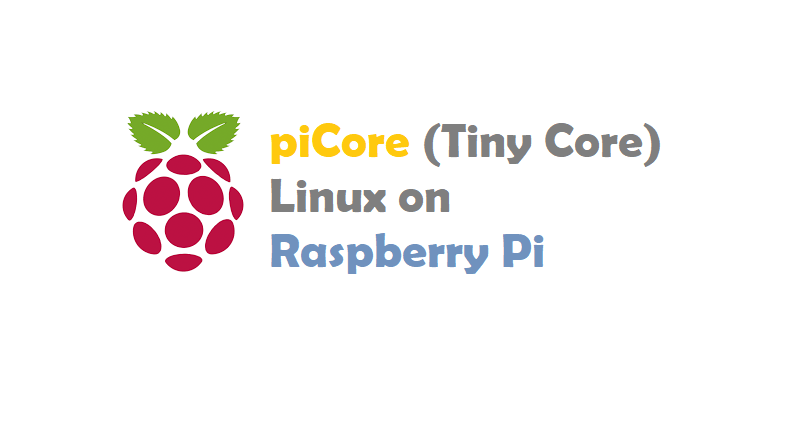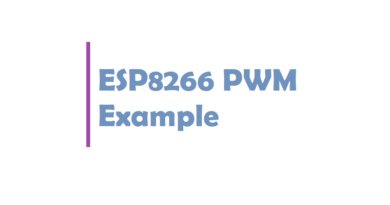piCore (Tiny Core) Linux on Raspberry Pi
Tiny Core, a unique and minimalist distribution of the Linux operating system and tools. piCore is the Raspberry Pi port of Tiny Core Linux, which is an independent system architected by Robert Shingledecker and now developed by a small team of developers with strong community support. As piCore runs entirely in RAM, boot media is not used after boot and there is no installation in conventional terms.
Tiny Core Linux is not a traditional distribution but a toolkit to create your own customized system. It offers not only flexibility, small footprint but a very recent kernel and set of applications making it ideal for custom system, appliances as well as to learn Linux specially on the Raspberry Pi.
Why is Tiny Core special?
Tiny Core is:
- Very Small. At 10 megabytes, Tiny Core is 1/400 to 1/100 the size of the most widely used operating systems in the world (even compared to most Linux distros). That makes Tiny Core flexible enough to be stored and run from usb sticks, a just-about-full CD, or even embedded devices. hardware.
- Linux. Tiny Core uses the Linux Kernel and a set of command-line (text interface) tools including busybox.
- A GUI Desktop. Tiny Core has a flexible and fully-customizable Graphical User Interface Desktop. Mouse, keyboard, and screen support basically works out-of-the-box thanks to FLWM, the FLTK Desktop. You can also quickly install and try out a variety of other desktops and interfaces including Fluxbox, XFCE, OpenBox, IceWM, Joe’s WM, LXDE, and others.
- Minimal. Tiny Core does not ‘ship’ with most end-user software. Instead, Tiny Core lets you quickly and easily compare, select, download, and install your preferred web browser, word processor, music player, and other software.
- Unusually Stable. Every time Tiny Core loads, it is brand-spanking new. That means Tiny Core just doesn’t get a blue screen. Instead of installing programs into the system file space and risking damage to the system files, Tiny Core uses program ‘extensions’ that are re-prepared at each reboot … and they are prepared fast.
- Unusually Fast. Unlike most operating systems, the Tiny Core can run completely from RAM. Individuals with RAM to spare can even use Tiny Core to load and run their programs from RAM (you didn’t know your computer could run Open Office and Firefox so quick). Experienced users can still install Tiny Core to disk, but Tiny Core can run in 48 megabytes of RAM … or less.
- Internet ready. Tiny Core almost always finds your network card right right away. You’ll be adding applications and tools after an unusually quick boot. You can even come back here and ransack the forums if you find you need help.
- Available even smaller. Linophiles that get things done without a GUI can get the MicroCore, a version of Tiny Core without X that is under 7 MB.
- An open source community. Tiny Core is under active community development, led by a team of really dedicated people. You can find answers and ask questions in the forum, add your own experiences to the wiki, help add extensions (programs) to the Tiny Core Repository, and read enough Tiny Core to make your head spin.
Now Follow given Steps:
Step 1. Download the piCore image:
You can download the latest piCore image from the following download link (for this article I am using the piCore-9.0.3.zip image) –
http://distro.ibiblio.org/tinycorelinux/ports.html
2. Download and Install Etcher:
After downloading the piCore image, you need to flash it into the SD Card of your Raspberry Pi. Etcher is a great utility to flash the OS images into SD Cards or USB Drives. You can download it from Etcher home page –
Recommebded: Etcher – Flash OS images to SD cards & USB drives, safely and easily
3. Burn the piCore image into SD Card:
Connect your SD Card with your computer and use Etcher to flash it with OS.
4. Boot Raspberry Pi with piCore:
Connect the flashed SD Card on your Raspberry Pi and power it on.
5. SD Card Partitions:
The first partition (/dev/mmcblk0p1) is Win95 FAT32 (VFAT) type partition; it contains the basic piCore system and the Raspberry Pi boot loader, firmware and other support files. This partition is unmounted during operation, and the system does not use it after the boot process gets completed.
The second one (/dev/mmcblk0p2) is ext4 type partition; it is used for pre-installed extensions like ssh. However, the size of this partition is very small and it won’t allow you to install any additional extensions. You must expand this partition to have enough free space for additional extensions and backups.
6. Expand the /dev/mmcblk0p2 Partition:
6.1 Start fdisk partitioning tool as root, using the following command –
sudo fdisk -u /dev/mmcblk0
6.2 Now list partitions with ‘p‘ command and write down the starting and
ending cylinders of the second partition.
6.3 Delete the second partition with ‘d‘ command and then enter ‘2‘ as ‘Partition Number’.
6.4 Create a new partition using ‘n‘ command. Select ‘p’ for ‘Primary Partition‘ and ‘2‘ for ‘Partition Number’. For ‘First Cylinder’ use the same value as you had in the original partition (you made note of this value in step # 6.2). You may use the default value for ‘Last Cylinder’ or may use the smaller value if you want to create more partitions (for ex: swap disk).
6.5 Reboot the system using the following command –
sudo reboot
6.6 After the system boots up, expand the ‘/dev/mmcblk0p2‘ partition using the “sudo resize2fs /dev/mmcblk0p2” command –
tc@box:~$ sudo resize2fs /dev/mmcblk0p2 resize2fs 1.43.4 (12-Jun-2017) Filesystem at /dev/mmcblk0p2 is mounted on /mnt/mmcblk0p2; on-line resizing required old_desc_blocks = 1, new_desc_blocks = 104 The filesystem on /dev/mmcblk0p2 is now 13561088 (1k) blocks long. tc@box:~$
With this, your Raspberry Pi is ready with piCore.
The default user ssh or shell user for piCore is “tc” and its default password is “piCore“.
For “root” user, login to piCore shell using “tc” user and run “sudo passwd” command to change the root password.
7. Reinstall SSH Extension
piCore comes with SSH extension included, if you aren’t careful during the partition expansion process, it may stop working (if you lose tce directory from /dev/mmcblk0p2 partition).
Install and Configure SSH
1. Install OpenSSH Package:
Install OpenSSH package using the following command –
tce-load -wi openssh
2. Create SSH Config from Template:
Copy the example configuration file into the ssh_config file using the following commands –
cd /usr/local/etc/ssh/ sudo cp ssh_config.example ssh_config
3. Start the SSH Service:
Start the SSH service using the following command –
sudo /usr/local/etc/init.d/openssh start
4. Change the “tc” User Password:
Change the Password for default “tc” user, so that you can enter this password on ssh user/password prompt. Use the following command to change the password –
passwd
Note: If you want to change the Root Password, you can switch to root using “sudo su” and then use the “passwd” command to change the root password.
5. Check the IP Address:
To ssh into your Tiny Core Machine you need the IP Address assigned to it. You can get hold of IP Address using the following command
ifconfig
6. Verify SSH Service:
You can grep the “sshd” (ps | grep ssh) process or you can check if your machine is listening on port 22 using the following command –
sudo netstat -anp | grep 22
tc@box:~$ ps | grep ssh 861 root /usr/local/sbin/sshd 868 root sshd: tc@pts/0 930 tc grep ssh tc@box:~$ tc@box:~$ sudo netstat -anp | grep 22 tcp 0 0 0.0.0.0:22 0.0.0.0:* LISTEN 861/sshd netstat: /proc/net/tcp6: No such file or directory netstat: /proc/net/udp6: No such file or directory netstat: /proc/net/raw6: No such file or directory tc@box:~$
7. SSH from a Client Machine:
From Linux client machine you can use “ssh tc@IP_Address” command to login to your Tiny Core instance. On windows machines, you can use something like putty client for SSH login.
I hope you like this post”piCore (Tiny Core) Linux on Raspberry Pi”. Do you have any questions? Leave a comment down below! Thanks for reading. If you like this post probably you might like my next ones, so please support me by subscribing my blog.
Explore Some more Raspberry Pi Tutorials :
- Raspberry Pi – Introduction | Overview | Setup and Management | Tutorials
- How to Install Mosquitto Broker on Raspberry Pi
- Setting up SPI on Raspberry Pi
- Getting Started with The Sense HAT – Raspberry Pi
- Raspberry Pi GPIO Basics
- Controlling LED with Raspberry Pi PART-2
- How To Setup Static IP Address on Raspberry Pi
- Controlling LED with Raspberry Pi
- Interfacing a light Sensor (LDR) with Raspberry Pi
- Remote control your Raspberry Pi from your PC with VNC!
- How To Use Raspberry pi in a truely headless mode
- ROCK Pi 4 : Overview | Installation
- Best OS for Raspberry Pi
- How to setup Bluetooth on a Raspberry Pi 3
- Simple Raspberry Pi Home Security System
- Raspbian – OS For Raspberry Pi
- Setting up a Raspberry Pi headless





Pingback: piCore (Tiny Core) Linux on Raspberry Pi — IoTbyHVM – Bits & Bytes of IoT – hashstacks
Pingback: How to Run Ubuntu 18.04 or 18.10 on Raspberry Pi
Between steps 4 and 5 how do you get to the Pi? I can’t ssh in and there is no serial console that I can see